| Author |
Message |
|
Tyler C.
|
 Posted: Thu 16 Apr, 2020 12:08 pm Post subject: Decoration on 11-12th Century Hilts Posted: Thu 16 Apr, 2020 12:08 pm Post subject: Decoration on 11-12th Century Hilts |
 |
|
Hi all,
I recently ran across this beauty. I can't recall ever seeing decoration like this on a 11-12th century hilt. Does anyone know of any other examples of 11-12th century hilt decoration?
Thanks to Niels Provos for his pictures from the reichsstadtmuseum in rothenburg. For more go here: https://www.flickr.com/photos/nielsprovos/7574638152/in/album-72157630586189982/
 Attachment: 130.4 KB Attachment: 130.4 KB
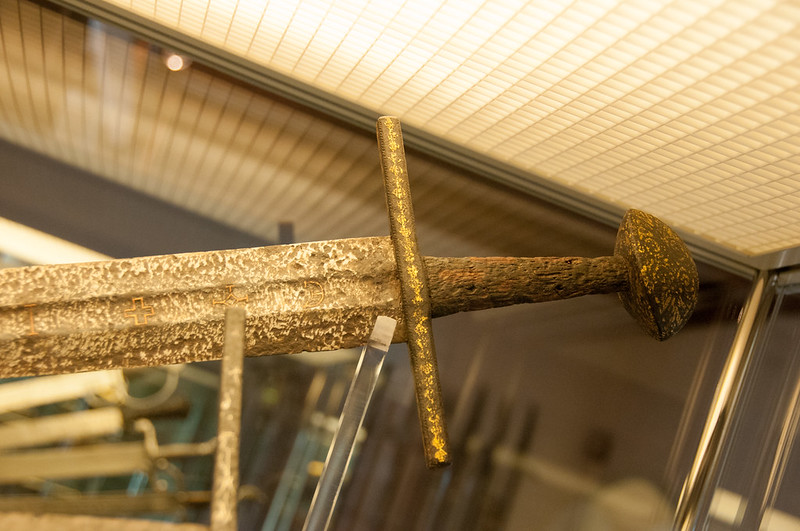
Decorated 11-12th century hilt
|
|
  |
 |
|
Mark Millman
|
 Posted: Thu 16 Apr, 2020 12:11 pm Post subject: Posted: Thu 16 Apr, 2020 12:11 pm Post subject: |
 |
|
Dear Tyler,
Where is this located?
Best,
Mark Millman
|
|
  |
 |
|
Tyler C.
|
 Posted: Thu 16 Apr, 2020 12:29 pm Post subject: Posted: Thu 16 Apr, 2020 12:29 pm Post subject: |
 |
|
| Mark Millman wrote: | Dear Tyler,
Where is this located?
Best,
Mark Millman |
Hi Mark,
It's in Rothenburg.
|
|
  |
 |
Mikko Kuusirati

|
 Posted: Thu 16 Apr, 2020 1:37 pm Post subject: Posted: Thu 16 Apr, 2020 1:37 pm Post subject: |
 |
|
Well, the hilt of a Finnish sword from the same time period discussed in this old thread is entirely covered with silver inlays in a somewhat similar style.
"And sin, young man, is when you treat people like things. Including yourself. That's what sin is."
Terry Pratchett, Carpe Jugulum
|
|
  |
 |
|
Henry R. Gower
|
 Posted: Thu 16 Apr, 2020 2:11 pm Post subject: Decorated Hilt. Posted: Thu 16 Apr, 2020 2:11 pm Post subject: Decorated Hilt. |
 |
|
Rotenburg ob der Tauber. A German medieval town, in Southern Germany, which fortuitously managed to evade any damage during the war. I stayed there once overnight, the room had three foot thick walls and a thick down duvet. A bit out of the way, but well worth a detour if one is reasonably nearby.
Henry
|
|
  |
 |
|
Tyler C.
|
 Posted: Thu 16 Apr, 2020 2:22 pm Post subject: Posted: Thu 16 Apr, 2020 2:22 pm Post subject: |
 |
|
| Mikko Kuusirati wrote: | | Well, the hilt of a Finnish sword from the same time period discussed in this old thread is entirely covered with silver inlays in a somewhat similar style. |
I forgot about that blade. I have definitely seen it before but I guess I had Oakeshott type A or B pommels and type 1 guards in mind. This one, however, certainly fits within the time frame, so thank you for the reminder.
| Henry R. Gower wrote: | Rotenburg ob der Tauber. A German medieval town, in Southern Germany, which fortuitously managed to evade any damage during the war. I stayed there once overnight, the room had three foot thick walls and a thick down duvet. A bit out of the way, but well worth a detour if one is reasonably nearby.
Henry |
After looking at the pictures that Niels posted it has risen very high on my bucket list of destinations. Hopefully I can make it there sometime.
|
|
  |
 |
J.D. Crawford

|
 Posted: Thu 16 Apr, 2020 3:58 pm Post subject: Posted: Thu 16 Apr, 2020 3:58 pm Post subject: |
 |
|
|
There are some very cool, unusually well preserved, and highly decorated swords in this museum. But I believe it has a reputation for dubious authenticity. Maybe some are Victorian era reproductions?
|
|
   |
 |
Nathan Robinson
myArmoury Admin


|
|
    |
 |
|
Tyler C.
|
 Posted: Thu 16 Apr, 2020 7:51 pm Post subject: Posted: Thu 16 Apr, 2020 7:51 pm Post subject: |
 |
|
| Nathan Robinson wrote: |
Yes, many/most pieces in that collection are examples of historicism. |
That's good to know. Do you happen to know if the sword in question is an original?
|
|
  |
 |
|
Tyler C.
|
 Posted: Fri 17 Apr, 2020 9:08 am Post subject: Posted: Fri 17 Apr, 2020 9:08 am Post subject: |
 |
|
Just a quick side note. I had another very close look at the pictures that Niels posted and I have a hard time picking out very many that I would categorize as suspect. To me they seem to show an appropriate condition for their age which is consistent on all parts of the piece. The blade forms and hilt shapes also appear to match. That being said, there are a few that I would say are somewhat off. I think these examples are perfect for another discussion topic that I had posted (Examples of Victorian Era Reproduction Swords, link below). If you are interested, have look though Niels's images and post what you think in the other topic. I am very interested to hear what others see in some of these examples.
http://myArmoury.com/talk/viewtopic.php?p=339511#339511
|
|
  |
 |
|
Tyler C.
|
 Posted: Thu 30 Apr, 2020 1:44 pm Post subject: More evidence Posted: Thu 30 Apr, 2020 1:44 pm Post subject: More evidence |
 |
|
I finally had a chance to do a bit more searching and I came across some interesting evidence. While looking for examples of existing swords I had the thought that I should see what period art could add to this topic. I was very surprised by what I found. From the artwork it appears that hilts decorated with yellow metal were very common, and other forms of decoration were also prevalent. I didn't take a tally but based on my search it appeared to me that decorated hilts are more common in period art than plain hilts. I will go back sometime and take a tally to get a better idea of the percentage.
Whether or not period art is representative of most blades of the time is of course another discussion. If I had to guess I would lean toward it not being representative. I say this because it appears that the art that is highly colored and detailed is depicting people of higher status and those are the images that I am pulling from. I feel I can at least say that it was not uncommon for hilts of the 11-12th century to be decorated. This came as a surprise to me because prior to this search I had envisioned the weapon fashion of this period as a large move away from the highly decorated hilts of the viking period to a style of plain utilitarian aesthetic. Now I am beginning to think that it was not a move toward a more plain style, but a move away from highly labor intensive wire inlay decoration to a decoration that is easier to apply like gilding or painting. Perhaps the reason that we are accustom to seeing blades from this period without adornment is because the decoration is perishable and has worn off on nearly all examples.
Below are 10 of the best examples that I found from my search of period art. Links to the full pictures and information is also listed below. I tried to get examples that showed Oakeshott type A or B pommels. On some of these it is difficult to tell for sure and some of them are wheel/disk type pommels. #9 is likely a disk, and 1 and 6 are difficult to tell for sure. They may be type B1. I found #3 particularly interesting because it appears to be a B or B1 pommel among Petersen type S hilts most of which appear to have decorative hilts. I also found #10 very interesting because it made me wonder if paints or enamels were also use to give color to hilt components. I found a few other examples of hilts with colors that do not appear to be metallic.
I just wish that we had more intact examples from this period that showed what type of details were applied to the hilts. I'm guessing it was not just a simple gilding applied to a smooth surface or solid color paint. The sword of St. Maurice (Vienna) is one period example I was able to find and it shows more detail that just simple gilding. It also supports the idea that gilding could be the style of decoration that we see in the period art. That being said, it is a coronation sword, so I'm not sure how much we can trust it to be representative.
Anyway, enough of my ramblings. Please have a look at the picture and links below. I would love to hear what anyone thinks of this, or if there are any other bits of evidence/info that can add to this topic.
1. http://manuscriptminiatures.com/4903/14533/
2. http://manuscriptminiatures.com/4762/7798/
3. http://manuscriptminiatures.com/5771/21793/
4. http://manuscriptminiatures.com/4449/22586/
5. http://manuscriptminiatures.com/4449/22587/
6. http://manuscriptminiatures.com/5815/22559/
7. http://manuscriptminiatures.com/4555/11246/
8. http://manuscriptminiatures.com/5770/21792/
9. http://manuscriptminiatures.com/media/manuscr...1447-2.jpg
10. http://manuscriptminiatures.com/4739/9849/
 Attachment: 282.3 KB Attachment: 282.3 KB
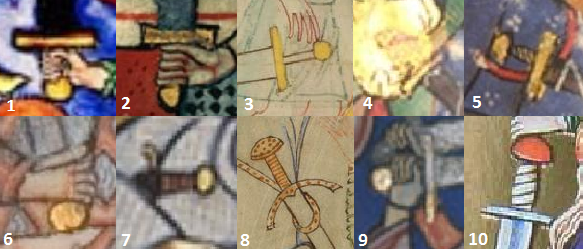
|
|
  |
 |
|
Daniel FitzEdward
Location: Lancaster Joined: 15 Dec 2014
Posts: 3
|
 Posted: Fri 01 May, 2020 5:15 am Post subject: Re: Decoration on 11-12th Century Hilts Posted: Fri 01 May, 2020 5:15 am Post subject: Re: Decoration on 11-12th Century Hilts |
 |
|
The first examples that leap to mind (especially when looking at the logical bounds of what 'the most decorative' looks like) are the swords of the Holy Roman Emperors. These were swords designed to be used in the coronation ceremony, and as with most other regalia represent the extreme upper threshold.
The sword of Otto III and Otto IV both date to the 12th century, and both are decorated- Otto III with a repeated geometric pattern (that switches, half-way across the guard) an the sword of Otto IV with a Latin inscription on one side of the blade, "REIGNAT : CHRISTVS : INPERAT"- (Christ triumphs, reigns, rules).
 Attachment: 104.55 KB Attachment: 104.55 KB
The sword of Otto III [ Download ]
www.normannis.co.uk
|
|
  |
 |
Michael B.
Industry Professional

Location: Seattle, WA Joined: 18 Oct 2007
Posts: 367
|
 Posted: Fri 01 May, 2020 9:08 am Post subject: Posted: Fri 01 May, 2020 9:08 am Post subject: |
 |
|
I took some detailed photos and measurements of this sword. Some of the pictures are below, the link to the album is at the end. Sorry about the mix of units of measure, I had a very narrow window of time with a pile of weapons so had multiple measuring tools.
OAL: 40.25"
Blade: 33.5"
POB: 7" from guard
Guard width: 9"
Fuller length: 30"
Blade width at base: 6cm
Blade width half way: 5.5cm
Near tip: 2.74cm
Thickness at base: 4mm
Tip: 2.5mm
Pommel:
8cm wide
4cm tall
3.3cm thick tapering to 8.5mm
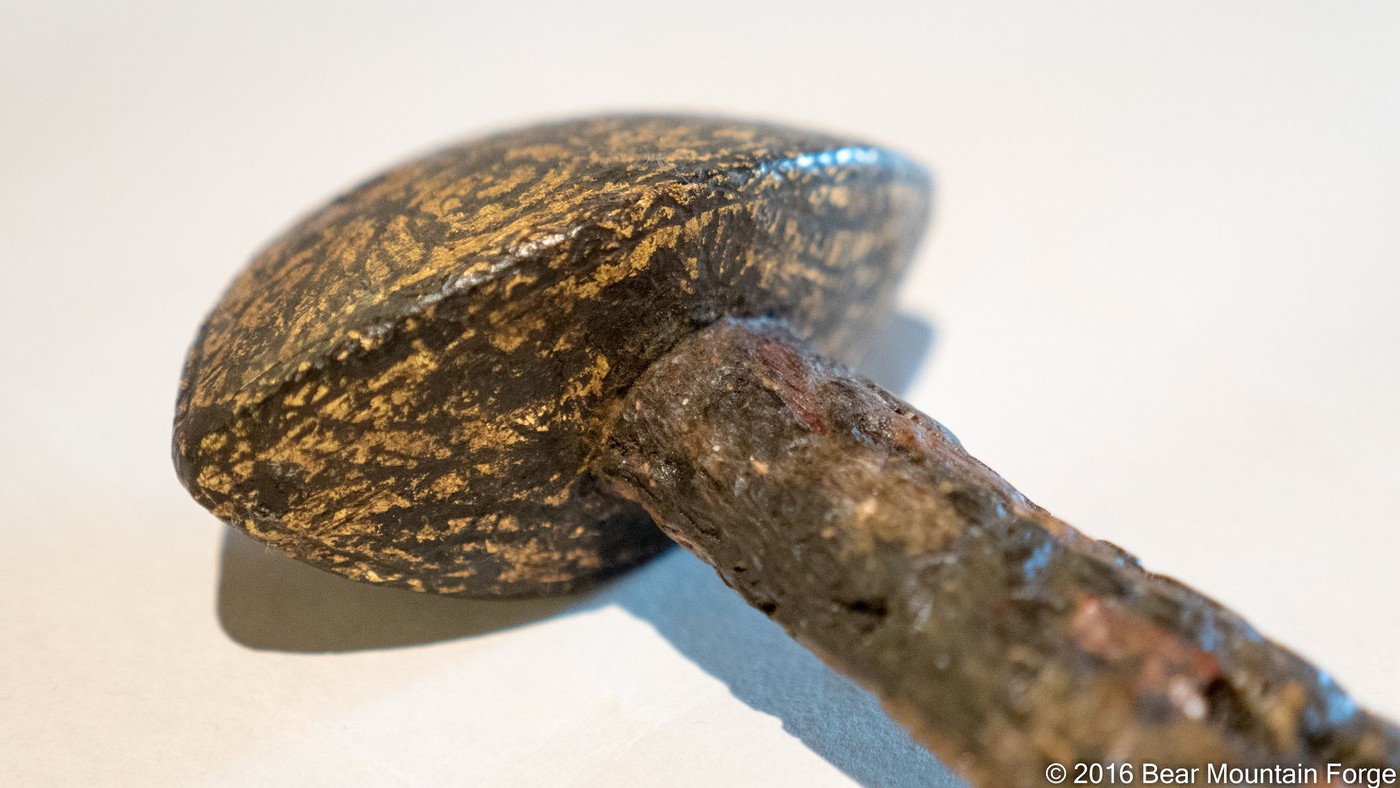
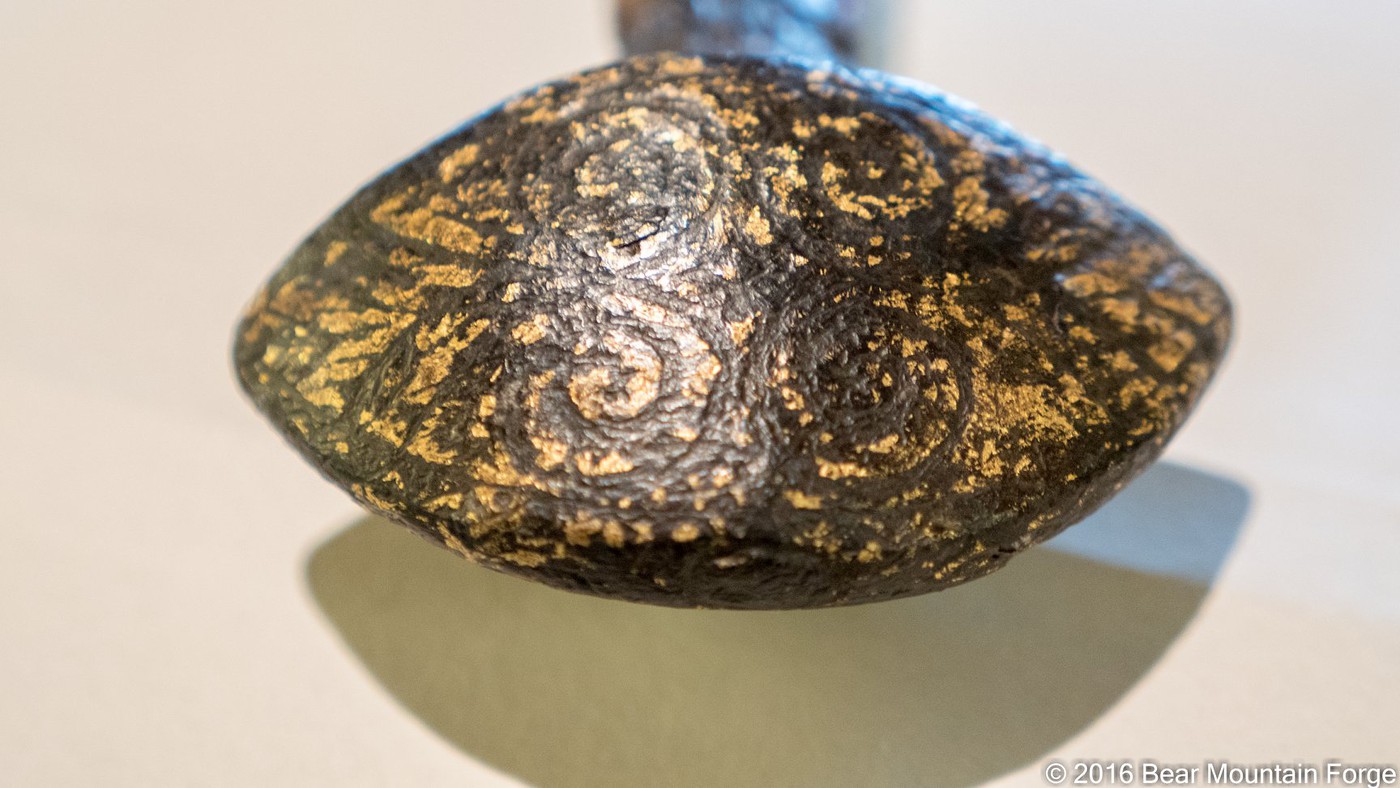
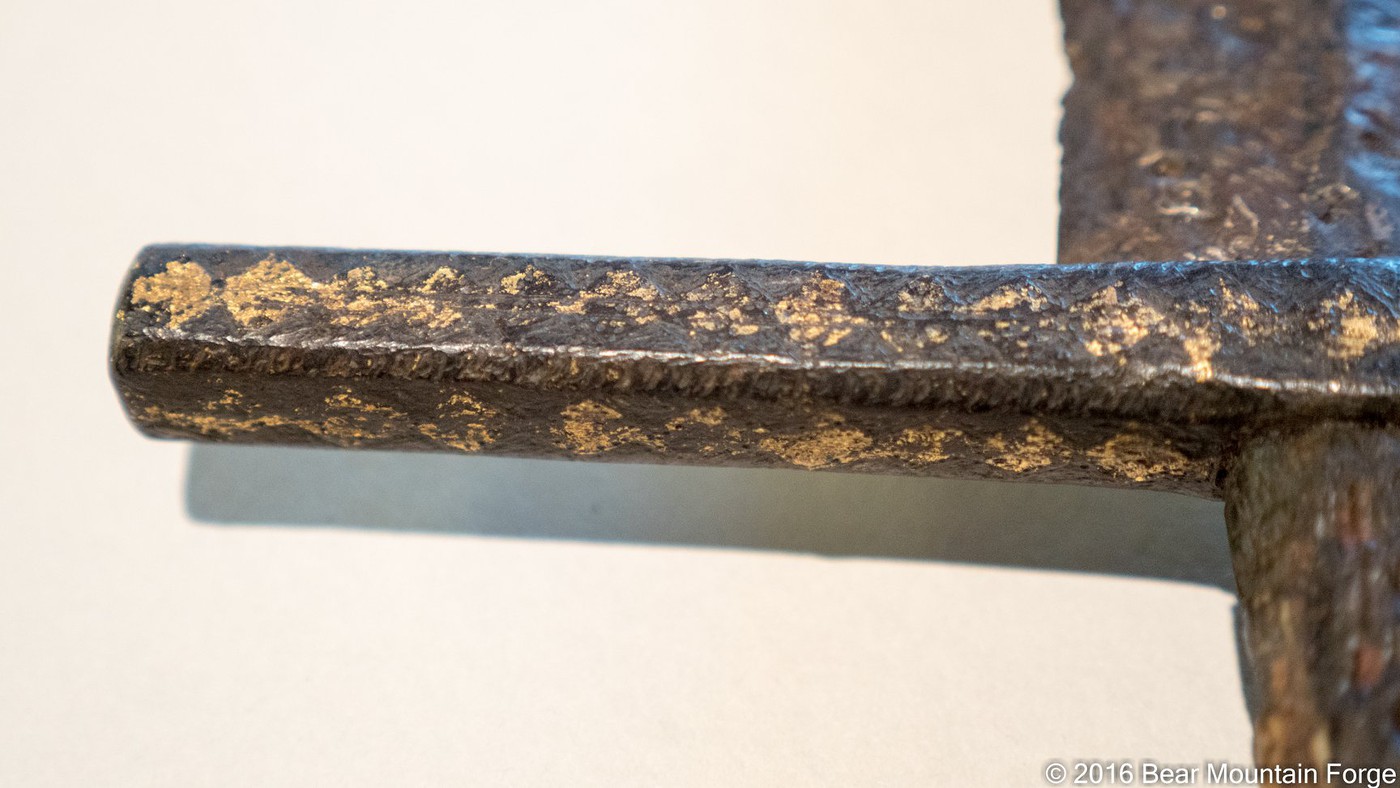
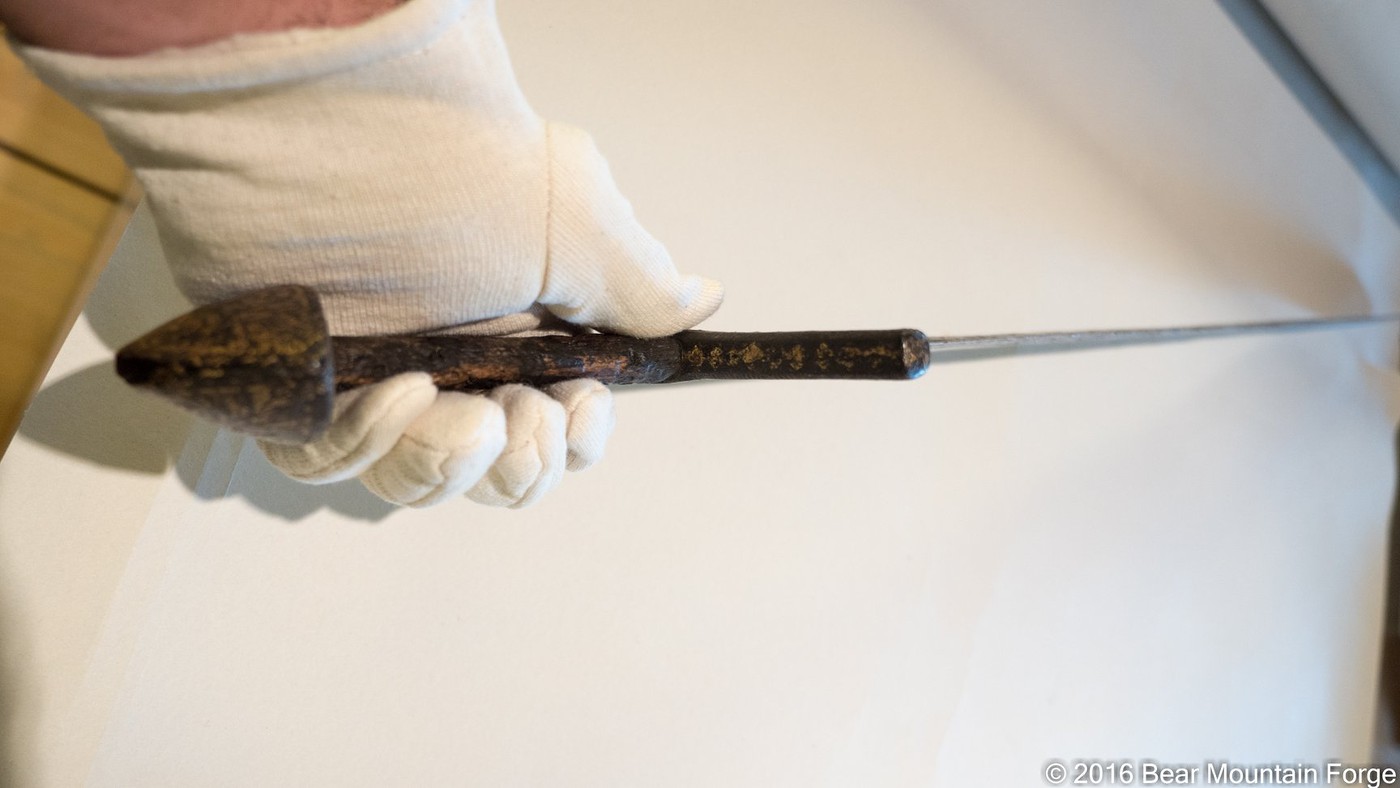

Additional Photos:
https://public.fotki.com/AKBergy/rothenburg-personal/11th-12th-century/
www.bearmountainforge.com
Michael Bergstrom
|
|
   |
 |
|
Tyler C.
|
 Posted: Wed 06 May, 2020 9:23 pm Post subject: Posted: Wed 06 May, 2020 9:23 pm Post subject: |
 |
|
| Daniel FitzEdward wrote: |
The first examples that leap to mind (especially when looking at the logical bounds of what 'the most decorative' looks like) are the swords of the Holy Roman Emperors. These were swords designed to be used in the coronation ceremony, and as with most other regalia represent the extreme upper threshold.
The sword of Otto III and Otto IV both date to the 12th century, and both are decorated- Otto III with a repeated geometric pattern (that switches, half-way across the guard) an the sword of Otto IV with a Latin inscription on one side of the blade, "REIGNAT : CHRISTVS : INPERAT"- (Christ triumphs, reigns, rules). |
Daniel, Thank you for the great examples. While looking at your suggested coronation swords, I also came across this paper that discusses the polish coronation sword. It's has some great information on these polish blades.
http://archiv.ub.uni-heidelberg.de/artdok/342...c_2011.pdf
While interesting to study and certainly relevant to the topic, I'm keeping in mind that these are in a group of their own and not representative of what you would find on swords built for use and carry. I hope we can find more evidence/examples of decoration on swords made for use.
| Michael B. wrote: | I took some detailed photos and measurements of this sword. Some of the pictures are below, the link to the album is at the end. Sorry about the mix of units of measure, I had a very narrow window of time with a pile of weapons so had multiple measuring tools.
|
Michael, Thank you so much for the extra pictures. Really really enjoyed the closer look and details. This sword is very similar in many respects to the Albion Gaddhjalt. I had to get mine out and wave it around for a bit after looking at your pictures and dimensions. I believe we have established that some of the blades in the Rothenburg collection are embellished or fake, but you also mentioned that there is "quite a bit of real". Having handled these in person I wondered what your thoughts are on this particular blade. Would love to hear what you think regarding its authenticity.
|
|
  |
 |
|
Tyler C.
|
|
  |
 |
Paul Hansen

|
 Posted: Tue 09 Jun, 2020 1:27 pm Post subject: Posted: Tue 09 Jun, 2020 1:27 pm Post subject: |
 |
|
Beautiful sword in the OP!
With regards to decorated brazilnut pommels, the sword of Siguinus comes to mind immediately:
http://www.armabohemia.cz/imgnew/epees/epees/sigc2.jpg
But I found in my picture collection also the sword attached. This is from the Kulturhistorisk Museum, no. C36640.
And another sword from Rennes (Ille-et-Vilaine), La Vilaine river Le Mans, Musče Tessč, Collection des Musčes du Mans, 1981.885.9.
In this thread you can find some further examples of decorated pommels, although generally a bit later: 12th - 13th C onwards.
 Attachment: 110.31 KB Attachment: 110.31 KB
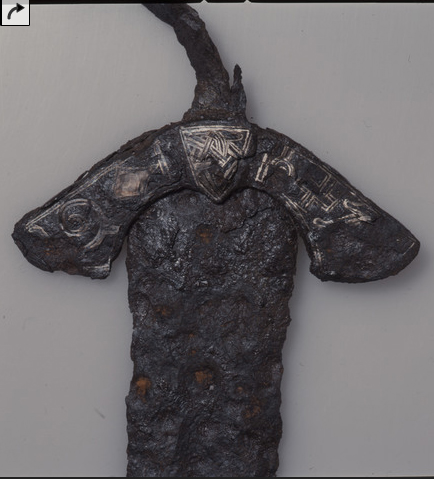
 Attachment: 95.28 KB Attachment: 95.28 KB
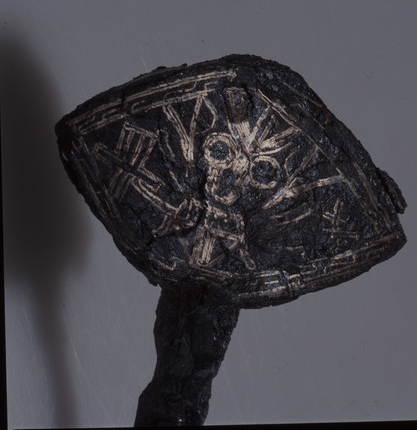
 Attachment: 120.93 KB Attachment: 120.93 KB
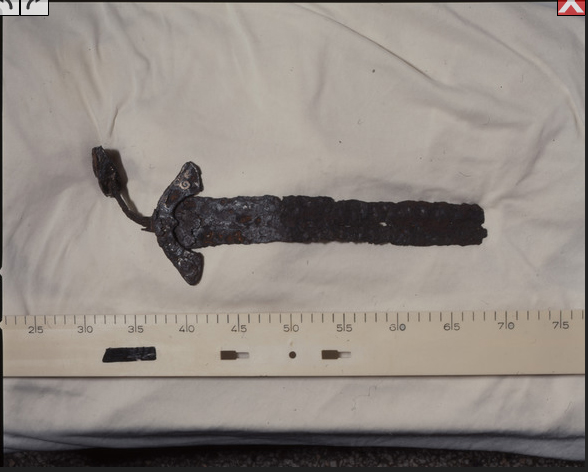
 Attachment: 51.63 KB Attachment: 51.63 KB
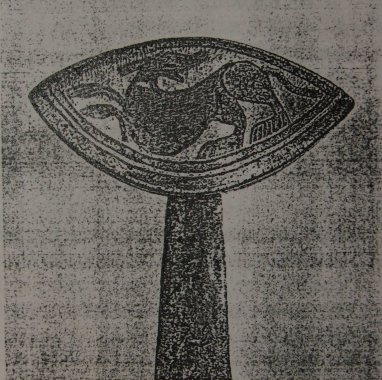
|
|
  |
 |
|
Tyler C.
|
 Posted: Tue 09 Jun, 2020 7:07 pm Post subject: Posted: Tue 09 Jun, 2020 7:07 pm Post subject: |
 |
|
| Paul Hansen wrote: | Beautiful sword in the OP!
With regards to decorated brazilnut pommels, the sword of Siguinus comes to mind immediately:
http://www.armabohemia.cz/imgnew/epees/epees/sigc2.jpg
But I found in my picture collection also the sword attached. This is from the Kulturhistorisk Museum, no. C36640.
And another sword from Rennes (Ille-et-Vilaine), La Vilaine river Le Mans, Musče Tessč, Collection des Musčes du Mans, 1981.885.9.
In this thread you can find some further examples of decorated pommels, although generally a bit later: 12th - 13th C onwards. |
Paul,
Thank you. Those are some excellent examples. I had not seen the sigvinais sword before. I am intrigued. It's hard to see much detail in the picture you posted, and I can't seem to find many other pictures of it online. Does anyone have some good pictures of the sigvinais sword that they could share? The picture below is the only picture I found and is from another post here on myArmoury.

From: http://myArmoury.com/talk/viewtopic.16644.html
You just beat me in posting the third pommel. I found the below picture last night while looking through the photo albums on the myArmoury Facebook page (not sure why I hadn't looked there before) and I intended to post it tonight. What a beauty! There is no source information on the FB page so the details you shared are well timed.

I also found a few additional pictures of this sword in the thread mentioned above. I'll include them here for convenience:

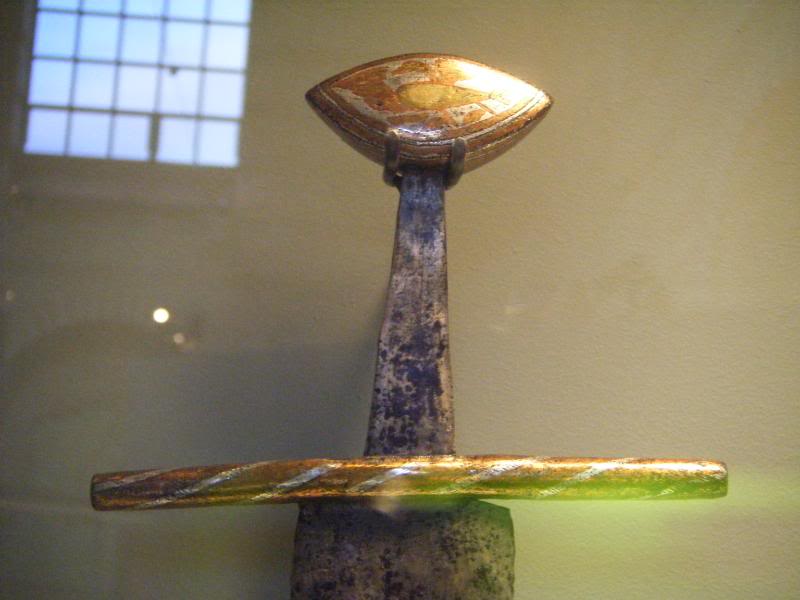
Originally posted by Zach Luna from pictures he took at The Museé de Cluny
Here are two others from the FB page that I also came across last nigh. I am assuming that they are of the right time period based on the forms. Does anyone know what swords these pommels belong to? The second one looks like it could be the pommel of the sigvinais sword, but I don't know the sword well enough to identify it. Can anyone confirm?


More and more I am beginning to think that decorated hilts in the 11-12 century were much more common than I had been led to believe. It appears that there was a move from geometric patterns made with wire inlay to patterns or figures that were better suited to gilding or overlay techniques. It's an exciting new idea for me.
I also went back to the manuscripts and attempted a basic tally on the colors of hilts in the manuscripts on manuscriptminiatures.com. The below count was done with the following rules: Only one point per color per manuscript, manuscripts with questionable coloring or indistinguishable colors were not counted, only manuscripts dated to the 11-12th century were used, other colors were not counted, I did not count red hilts that appeared to just be bloody.
Silver/gray: 18
Gold/yellow: 17
Black: 2
Red: 10
As a whole the silver/gray colored hilts are in the minority, and it could also be possible that some of the hilts colored with a silver/gray color were decorated in a silver colored metal and not just bare. Red could also indicate rust instead of decoration. Admittedly this was a very simplified count from a inherently biased source, but perhaps it has some meaning.
|
|
  |
 |
Michael Harley

Location: Melbourne, Australia Joined: 12 Apr 2006
Posts: 94
|
 Posted: Thu 11 Jun, 2020 6:06 pm Post subject: Posted: Thu 11 Jun, 2020 6:06 pm Post subject: |
 |
|
The Battersea sword, currently housed at Pitt-Rivers museum
 Attachment: 92.65 KB Attachment: 92.65 KB

Information is not knowledge, Knowledge is not wisdom, Wisdom is not truth - Frank Zappa
|
|
   |
 |
|
Tyler C.
|
 Posted: Fri 12 Jun, 2020 6:53 am Post subject: Posted: Fri 12 Jun, 2020 6:53 am Post subject: |
 |
|
| Michael Harley wrote: | | The Battersea sword, currently housed at Pitt-Rivers museum |
Thanks Michael. Now that I see the rest of the hilt, it looks like it could be an earlier sword. I'm thinking more like 8th or 9th century. This style of decoration seems to appear more on later swords though so I'm not sure where to place it.
|
|
  |
 |
|
Tyler C.
|
 Posted: Tue 16 Jun, 2020 2:33 pm Post subject: Posted: Tue 16 Jun, 2020 2:33 pm Post subject: |
 |
|
Here is another example from the myArmoury photo albums that likely fits the period and is decorated. In this case the decoration is silver plating on the pommel and thin silver sheets on the cross.

|
|
  |
 |
|
|

